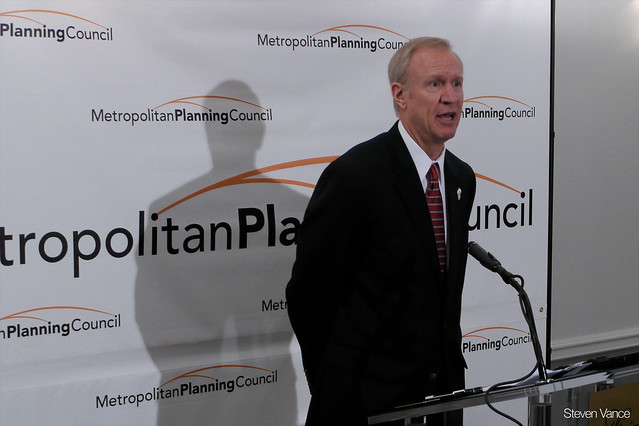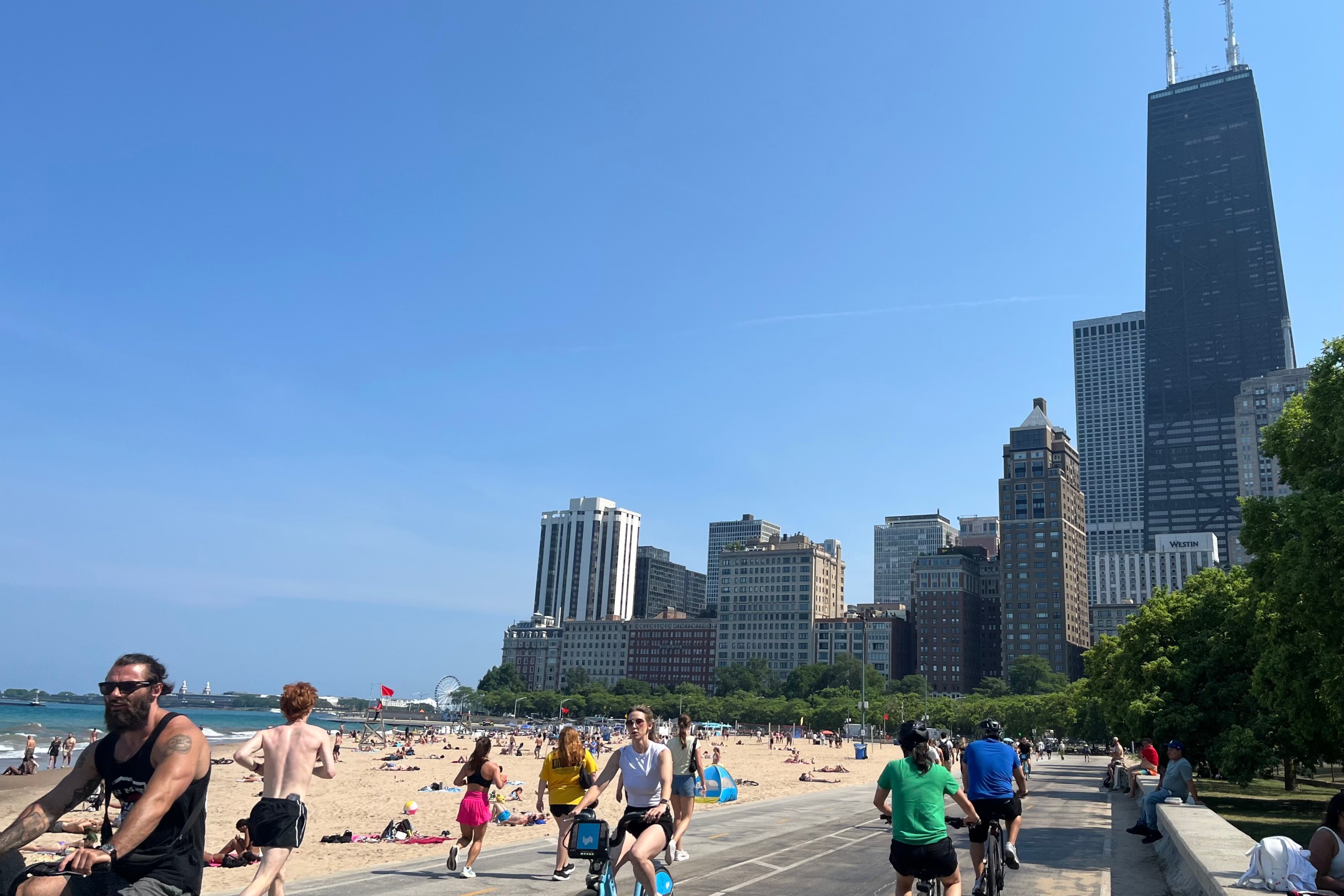
The Illiana Tollway, a joint proposal by the Illinois and Indiana departments of transportation to build a 47-mile highway through thinly populated farmland about 40 miles south of Chicago, rolled over another hurdle yesterday when the Federal Highway Administration approved the project's environmental impact study. FHWA's approval allows IDOT and InDOT to proceed with soliciting bids for the highway.
In a press release, IDOT called the FHWA's "record of decision" an endorsement of the project and process. IDOT, of course, is reading too much into this: FHWA didn't endorse the project by awarding it a huge grant. Instead, FHWA merely acknowledged that the Illiana meets the federal government's minimum justification standard for highways. Even though the Illiana might meet that bare minimum, the FHWA isn't putting its own money on the line. Rather, FHWA has simply said that Illinois is now free to waste its own money on the project.
This monstrous boondoggle – one of the most wasteful road projects in the entire country – surely won't be stopped by IDOT or by any agency, like the Chicago Metropolitan Agency for Planning, dependent on IDOT. The federal government's involvement concluded with the EIS review, so it's now out of the picture. It's up to governor-elect Bruce Rauner to put an an end to this travesty.
Stephen Schlickman, executive director of the Urban Transportation Center at the University of Illinois at Chicago, recently told the Better Government Association that Rauner "has the authority to shelve [Illiana]. He doesn't have to ask anyone." Schlickman added that, because the Illiana is "moving so rapidly," Rauner will need to act quickly and decisively. IDOT is just weeks, or months, away from formally issuing a Request for Proposals to its short list of bidders, and award contracts soon afterwards.
Rauner told the Tribune's editorial board in September that he didn't know if the Illiana should be built, and that he'd "have to see the studies" before making that decision. In the past, he's hedged on the issue – both saying that the project "may have the potential to be an economic development engine," but also that IDOT's public-private partnership shouldn't leave taxpayers "holding the bag."
If Rauner does take a close look at the studies, he'll find that the Illiana's economic development "potential" lies entirely in Indiana, and that the state's $1.3 billion would create just 940 jobs through 2040. The editorial board directly asked Rauner if he had seen the studies, and wrote then that "there is no upside" to the road.

Besides the Tribune, numerous other voices across the state are pleading with Rauner to kill the project. Springfield's State Journal-Register gave a nod to Rauner's numerous proclamations that he's a "reformer", and his description of Illinois' financial situation as "stunningly bad." Given that perilous situation, the Journal-Register called for him to "drive a stake into [the Illiana] as soon as possible," immediately freeing up $500 million, and eventually much more.
Joe Cahill wrote in Crain's Chicago Business that he wished Rauner would "make it clear this unneeded highway project would go nowhere under [his] administration," and that Rauner could easily point to the Illiana as "Exhibit A of Mr. Quinn's profligacy, and willingness to sell out the public for political gain."
So far, Rauner has said little about the Illiana Tollway. What we have heard him say throughout his campaign – echoing Republican legislators and a Civic Federation report [PDF] – is that the state's budget is riddled with accounting gimmicks, and therefore that the state is even deeper in the red than current budgets say. Rauner says his budget will "come in due time," the Tribune recently reported, but when it does arrive it will likely include deep spending cuts across the board.
The Illiana would be one of the easiest cuts for Rauner to make, since it will cost Illinois untold millions and offer negligible benefits. CMAP has studied the project extensively, and had concluded that it was completely at odds with the GO TO 2040 regional plan. Not only would it create more sprawl and set up an ongoing drain on the Chicago region's economy, it would not even reduce traffic congestion because motorists would avoid its high tolls – leaving the state on the hook for ongoing operating subsidies.
Yet CMAP ultimately was the victim of an end run around its approval processes, with IDOT strongarming CMAP both through its budget and through Pace and Metra's committee votes.
In other news, the Environmental Law & Policy Center has launched a second legal attempt to stop the road through the courts. ELPC is challenging IDOT's environmental impact study, and the FHWA's approval, charging that the EIS is based on circular logic, presuming both that Will County's growing population will need a highway, and also that Will County's population will grow because the Illiana will be built. Its earlier lawsuit – asking courts to rule that CMAP could not have approved the Illiana, since its board and not its policy committee has the final say – is still under litigation.


